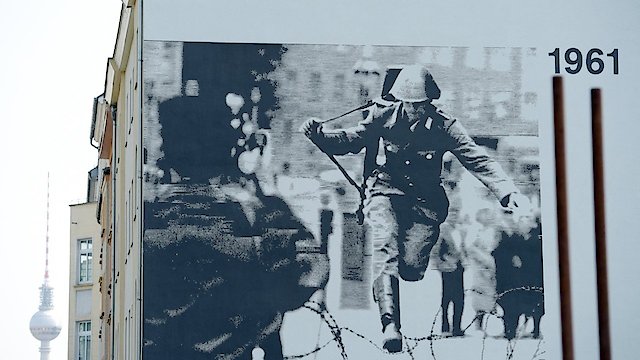
The Wall: A World Divided
Where to Watch The Wall: A World Divided

The Wall: A World Divided is a thought-provoking documentary released in 2010 that delves deep into the complex and often controversial theme of division, both literal and metaphorical. Directed by the talented filmmakers behind some of the most poignant documentaries of our time, this film takes viewers on a compelling journey through varying global contexts of segregation, focusing particularly on the implications of walls—both physical barriers and ideological divides—in contemporary society.
The film opens with a striking visual contrasting scenes from various parts of the world where walls have been erected. From the infamous Berlin Wall that once divided East and West Germany to modern barriers like the Israeli West Bank Barrier and the fences rising along the borders of various nations, the visuals serve as a powerful reminder of humanity's long history of division. As the camera pans over these structures, a sense of unease sets in, prompting viewers to contemplate the reasons behind these separations and the human stories that unfold within and around them.
Throughout the narrative, The Wall: A World Divided juxtaposes historical footage and photographs with contemporary interviews, effectively bridging the gap between past and present. The filmmakers meticulously research and compile narratives from historians, sociologists, and ordinary individuals whose lives have been touched by these divisions. This multifaceted approach provides a rich tapestry of perspectives, allowing viewers to grasp the profound social, political, and emotional ramifications of living in a divided world.
The documentary does not shy away from exploring the psychological impact on individuals and communities living in the shadows of these walls. Personal stories from people who have experienced separation firsthand are woven throughout the film, creating deep emotional resonance. These anecdotes highlight how barriers can symbolize not only geographical divides but also social alienation, cultural stigmatization, and the erosion of human connection.
A significant theme that emerges from the film is the exploration of identity—how it is molded by the environments we inhabit, and how division influences the way individuals perceive themselves and others. The film raises essential questions about belonging, citizenship, and the arbitrary lines drawn by humans that dictate the myriad of experiences. It highlights the struggles of those attempting to cross these lines, invoking compassion and prompting reflections on the value of unity in a world marked by fragmentation.
In discussing the political dimensions of these barriers, The Wall: A World Divided provides a balanced exploration of the arguments made by both proponents and opponents of wall-building. It examines the rhetoric that often accompanies these structures, such as national security, immigration control, and cultural preservation. The film intricately traces how these narratives play into larger themes of fear and protectionism, creating a sense of urgency around the implications of ideological divides as they create a breeding ground for mistrust and conflict.
The cinematography of The Wall: A World Divided plays a crucial role in the storytelling. The filmmakers capture stark and evocative imagery of the walls, offering a visual representation of confinement and separation. These powerful shots are juxtaposed against scenes of natural beauty and unity, reinforcing the stark contrasts present in a world that is simultaneously interconnected and divided. The cinematographic choices enhance the emotional weight of the narrative, drawing viewers deeper into the complexity of the subject matter.
Furthermore, the film extends its scope beyond physical walls to explore metaphorical divides, examining issues such as class disparity, racial segregation, and cultural isolation. It raises critical questions about social justice and the systems that perpetuate inequality. The discussions around these divides are framed in a global context, emphasizing that while the walls may vary in form, the underlying issues of division resonate universally across different cultures and societies.
As the film unfolds, it provokes introspection and dialogue, inviting the audience to analyze their own perceptions and experiences of division. Rather than presenting a definitive answer to the issue, The Wall: A World Divided encourages a reflective and nuanced understanding of the complexities that surround the topic. It is a call for empathy and a reminder that, despite the walls we build, humanity is ultimately connected by shared emotions, aspirations, and a yearning for understanding.
In conclusion, The Wall: A World Divided is a powerful and evocative documentary that challenges viewers to reconsider the barriers that exist in our world. Through its blend of personal narratives, historical context, and stunning visuals, it compels its audience to reflect on the human cost of division and the possibility of overcoming these walls. The film serves not only as an exploration of a societal issue but also as a poignant commentary on the resilience of the human spirit in the face of separation and conflict.
The Wall: A World Divided is a Documentary, History movie released in 2010. It has a runtime of 55 min. Critics and viewers have rated it mostly positive reviews, with an IMDb score of 7.5..
